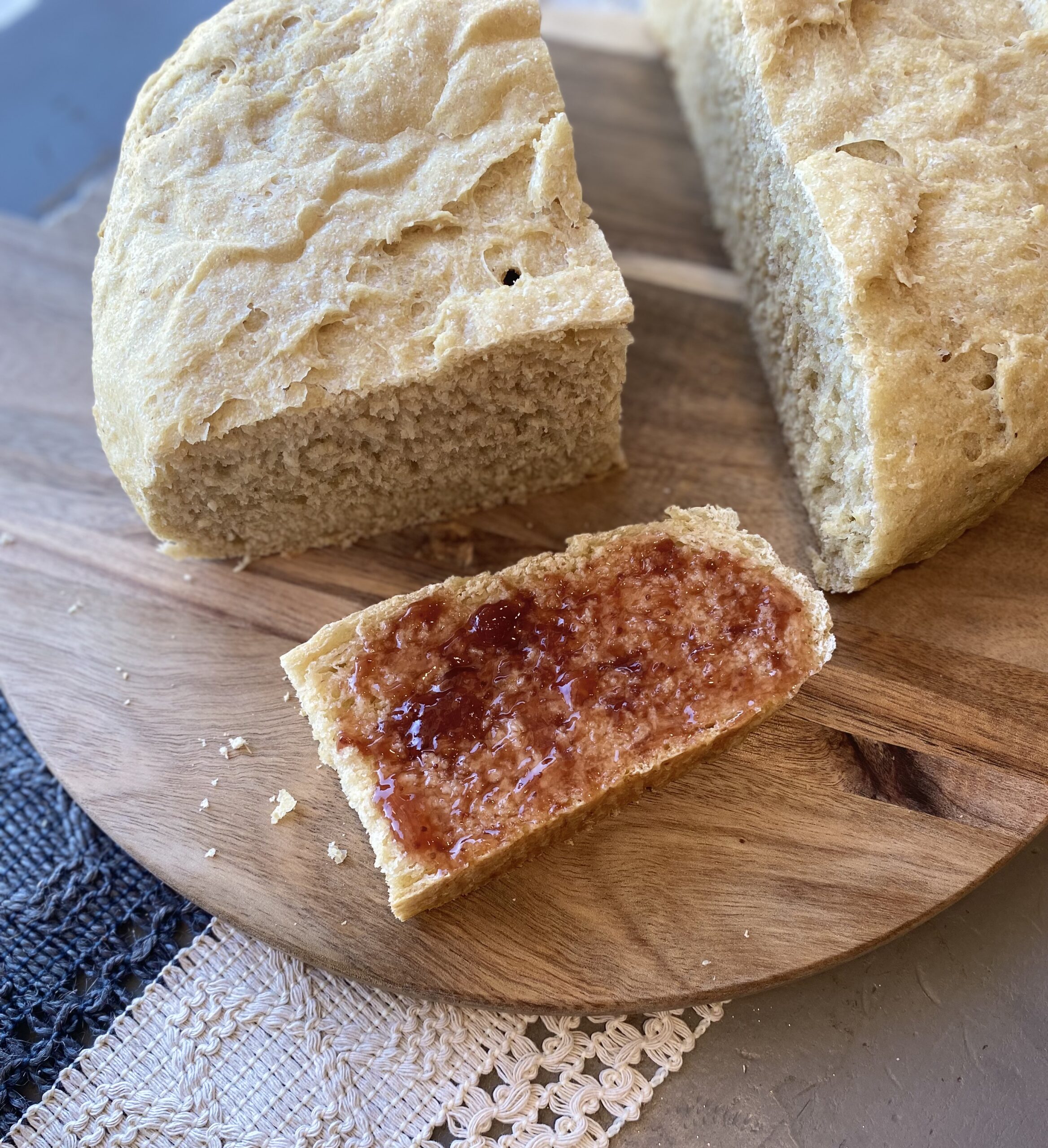Whole grains, honey, and the boost of beneficial bacteria in sourdough all rolled into one deliciously beautiful loaf of bread.
Cheating on Your Recipes
I went to a sourdough class once upon a time. The lady said that they used the same bread recipe, never deviating from it, for ten years because her kids loved it so much. I have some recipes that I love that much, but I also cheat on my favorite recipes often. Trying out new ones is just fun!
I also often make up recipes. Sometimes they turn out awful and my kids give me the side eye, “Mom! What did you do to this?” I have to calm their fears. It’s ok. It’s just one meal; we will be back with something yummy in a few hours.
This bread recipe was a happy accident. I was in a “toss ingredients in without measuring” kind of mood and this bread came out of it. I really like it. The extra virgin olive oil makes the softest bread and I love the addition of the oats, a boost of awesome texture. I had to make it a few times to get it just right but now it’s golden.

Benefits of Oats
Oats are such an awesome addition to bread. Oats have great fiber needed for digestive health. They are also higher in protein than most grains. They contain antioxidants, which help balance out the free radicals in our bodies. In addition, they can promote good cholesterol and blood sugar levels, heart health and can help with weight loss.
Have you wondered about oats? Probably a question that plagues you at night, which type of oatmeal is the most nutritious? Let me help calm your worries. They are all good.

Which Oat Form is Best
If you start with the humble oat groat, you will notice that it looks similar to a wheat kernel, though naturally gluten free. All forms of oats are steamed to help stabilize the oil in the grain. Without this process, the oats would go rancid very quickly.
Steel cut oats are oat groats chopped in pieces, rolled oats are run through a roller to flatten them and quick oats are chopped and flattened thinner than the rolled oats for a quicker cook time. Oat flour is any form of oats ground into flour with either a blender or a grinder.
Minerals, vitamins and antioxidants stay pretty much the same for all four forms. Technically, the steel cut oat is processed a bit less but not by much. All four forms are whole grains because they keep the germ and the bran intact. In this bread, I prefer the texture of the quick oat, but if you like the rolled oat better, it will be awesome too. Let’s get to it!

Honey Oat Sourdough Bread
Yields 3 Loaves
3 cups water
1 tablespoon salt
1 cup active, bubbly sourdough starter
½ cup honey
1/3 cup extra virgin olive oil
3 cup einkorn flour or other whole grain flour
1 cup quick or rolled oats
3-5 cups white flour
Add water, salt, starter, honey, oil, whole grain flour and oats to a mixer (I use a Bosch) or a bowl. Mix until combined. Add 3 cups all purpose flour to the bowl and mix. If needed, add 1/4 – 1/2 cup more flour at a time until the mixture comes together into a smooth dough and clears the side of the bowl. When you lightly press the dough with your finger it should not stick much to your finger. Knead the dough, either by hand or in your mixer for about 5 minutes. Transfer the dough to a large bowl or tupperware. Cover lightly with a lid or plastic wrap. You do not want the lid to be on tightly. The sourdough needs room to breathe.
Let the dough sit on your counter until it is double in size. This dough takes 8-12 hours to double at my house. Once the dough has doubled, remove from container and form the dough into desired shape. It makes three 800 gram loaves. It is yummy for rolls or pizza crust as well. Once shaped, cover and let double again.
If you made round loaves, slash it right before you bake it. Bake in a 400 degree oven. If I bake this dough in a dutch oven (my preferred method), I put the dutch oven on a pizza stone so the bottom doesn’t get too dark. I bake it covered for 20 minutes and then remove the dutch oven lid and continue baking until the internal temperature of the bread reaches 190-200 degrees.
If I bake it in loaf pans, I put my loaf pans on top of a pizza stone in the oven so the bottom of the loaf doesn’t get too dark. I bake the loaves for 20 minutes and then I cover the tops with foil so the tops don’t get too dark either. If your oven isn’t so finicky like mine, don’t worry about the foil on top. Bake the loaves until the internal temperature of the bread reaches 180 degrees. I have a thermometer that stays in my bread and beeps when it hits that temperature. It makes it nice and simple to know when it is done.






